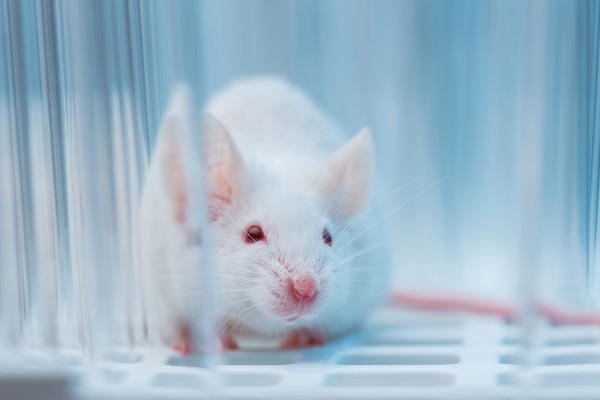科学家将一只老鼠基因改造成4%的人类
科学家将一只老鼠基因改造成4%的人类
Scientists mixing the genetic building blocks of two different animal species sounds like the beginning of a bad science fiction movie, but that’s precisely what a team of researchers just did by injecting human stem cells into mouse embryos. Just over two weeks later, the team had more mature mouse embryos that contained up to four percent human cells.
科学家们将两种不同动物的基因构建块混合在一起,听起来像是一部糟糕的科幻电影的开始,但这正是一个研究小组刚刚通过将人类干细胞注入小鼠胚胎所做的。仅仅两周后,研究小组就有了更成熟的小鼠胚胎,其中含有高达4%的人类细胞。
These cross-species hybrids, called chimeras, were long the stuff of fiction but have more recently become reality. Scientists in several countries have conducted experiments in which human cells were added to developing animal embryos, but none of them have managed to create an animal that was made up of as many human cells as these mice.
这些被称为嵌合体的跨物种混血儿长久以来都是虚构的,但最近才成为现实。有几个国家的科学家进行了实验,将人类细胞添加到发育中的动物胚胎中,但没有一个国家能够创造出像这些老鼠那样由人类细胞组成的动物。

As ScienceNews reports, the researchers modified the human stem cells by tweaking a protein and bringing the cells back to a previous stage in their development. This may be what allowed the cells to conform to their new surroundings after being injected into the mouse embryos.
据《科学新闻》报道,研究人员通过调整一种蛋白质,使干细胞恢复到其发育的前一阶段,从而对人类干细胞进行了改造。这可能是使细胞在注入小鼠胚胎后能够适应新环境的原因。
After letting the embryos develop for a further 17 days, the scientists discovered that human cells had spread throughout much of the developing animal. Human cells were found in tissue that would form the heart and brain and were especially plentiful in the blood. Not all of the embryos developed in the same manner and some had human cells in places where others didn’t, such as the eyes.
在让胚胎继续发育17天后,科学家们发现人类细胞已经扩散到了大部分发育中的动物身上。人类细胞存在于心脏和大脑的组织中,在血液中尤其丰富。并不是所有的胚胎都是以同样的方式发育的,有些胚胎在其他胚胎不发育的地方有人类细胞,比如眼睛。
But why do any of this at all? The idea here isn’t to create human/animal hybrids simply for the sake of doing so. It may seem a lot like “playing God,” but the scientists have human lives on their minds. It’s thought that if the development of these hybrid animals reaches a certain level of maturity, the animals could play a dramatic role in the testing of life-saving treatments that could ultimately be used on humans. It’s even possible that specific animals, like pigs, could one day grow human organs, thus offering doctors a new source of healthy organs for use in transplants.
但为什么要这样做呢?这里的想法并不是简单地为了这样做而创造人类/动物杂交。这听起来很像“扮演上帝”,但科学家们的头脑中有人类的生命。人们认为,如果这些杂交动物的发育达到一定程度的成熟,这些动物就可以在测试拯救生命的治疗方法中发挥重大作用,最终可以用于人类。甚至有可能某些特定的动物,比如猪,有一天能够长出人体器官,从而为医生提供用于移植的健康器官的新来源。
That, of course, is the scientific side of things. The ethics of it all are another story entirely. It’s easy for us to say that a human life is more valuable than that of any random animal, but the idea of raising farms of human/animal hybrids just so we can yank their guts out and slap them into our own bodies is a little, well, uncomfortable to think about.
当然,这是科学的一面。道德方面则完全是另一回事。我们很容易说,人的生命比任何随机动物的生命都更有价值,但养人兽杂交农场的初衷,只是为了让我们能把它们的内脏抽出来,然后把它们放到我们自己的身体里,是有点,嗯,不舒服。
In any case, we’re certainly not there yet and while the four percent human mouse is a step in that direction, there’s plenty of more work to be done.
无论如何,我们肯定还没有达到这个目标,虽然4%的人类老鼠是朝着这个方向迈出的一步,但还有大量的工作要做。


















